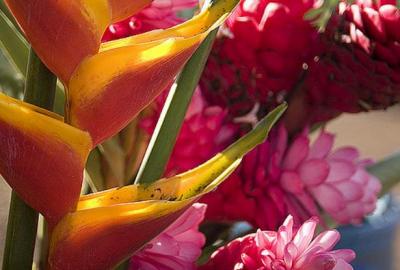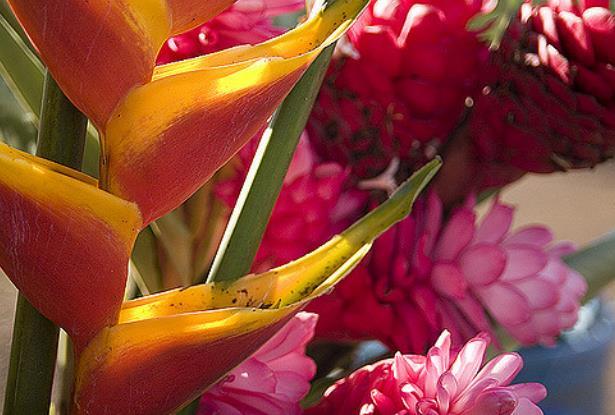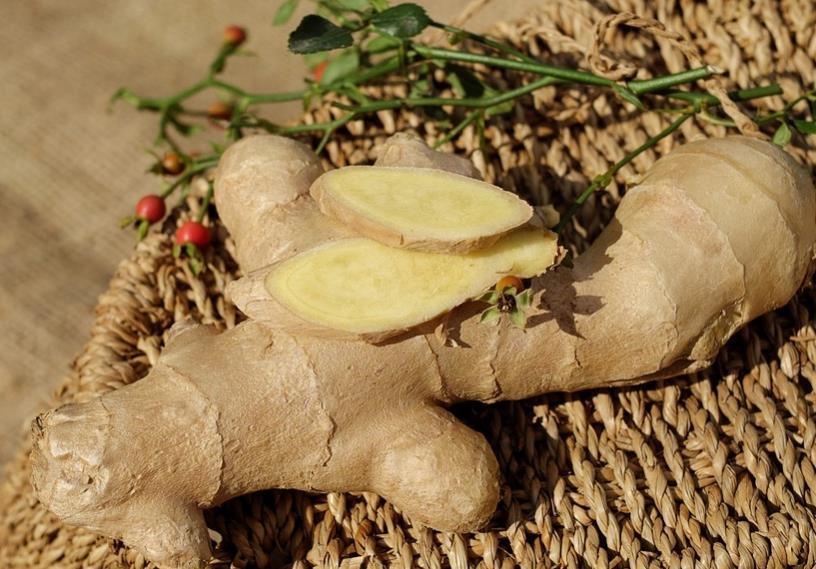This unique heat-loving plant appeared in East Asia, then it travelled through the Silk Road to India, Persia and Europe, being then spread all over the world. The ginger found special use among Europeans in the Middle Ages. When the Plague raged, the miraculous roots would be the main cure for the disease. To generate excitement and create mysterious image around it, the merchants would say that it grows at the edge of the world. In tropical rainforests spread across the Indian subcontinent to South Asia, it is still cultivated to this day.
The main component of fresh ginger root is the gingerol, which gives it unique and incomparable hot flavor. The gingerol is gone when the roots dry, and replaced by shagaol, which is the same as hot and valuable. The roots also contain antioxidants like zingerone, zerumbone, hot oleoresins, some terpenoids and flavonoids.
Confucius were sure that any meal had to be complete with a piece of ginger
Thanks to strong antioxidants contained in the roots, it is often used as a powerful anti-inflammatory remedy. It helps to cure the cold and recover cells, as well as to relieve cramps in the feet and pain in arthritis and osteoporosis.
Across the centuries, the ginger was used for flatulence, constipation, abdominal distention and other digestive disorders.
It also contains elements which affect positively the brain function. These are the 6-shagaol and 10-gingerol. The first one protects the neurons from damage, while the second one stimulates the nitrous oxide production.
Confucius were sure that any meal had to be complete with a piece of ginger
Thanks to strong antioxidants contained in the roots, it is often used as a powerful anti-inflammatory remedy. It helps to cure the cold and recover cells, as well as to relieve cramps in the feet and pain in arthritis and osteoporosis.
Across the centuries, the ginger was used for flatulence, constipation, abdominal distention and other digestive disorders.
It also contains elements which affect positively the brain function. These are the 6-shagaol and 10-gingerol. The first one protects the neurons from damage, while the second one stimulates the nitrous oxide production.
The ginger is also benefittable for those who love sunbathing, as it can absorb the UV-rays and prevents the DNA from damaging due to UV radiation.
The ginger is also famous by its capacity to stabilize the blood sugar level and keep the carbohydrate and lipid metabolism. Thai doctors use the root extract to resolve therapeutic problems related to hypertension.
The ginger root is well both for men and women. The ginger tea helps to relieve toxicosis, normalizes the endocrine profile, alleviates anxiety. The Chinese consider it a truly masculine spice and an aphrodisiac product, as it improves blood circulation, reduces the risk of prostatitis, tonifies the muscles and enhances brain function.
The ginger root does not lose the medical properties despite of how it is used: for tea or pickle. The ginger is also used to make jam, candies, sauces, added to the desserts. What do you use the ginger for?
The ginger is also famous by its capacity to stabilize the blood sugar level and keep the carbohydrate and lipid metabolism. Thai doctors use the root extract to resolve therapeutic problems related to hypertension.
The ginger root is well both for men and women. The ginger tea helps to relieve toxicosis, normalizes the endocrine profile, alleviates anxiety. The Chinese consider it a truly masculine spice and an aphrodisiac product, as it improves blood circulation, reduces the risk of prostatitis, tonifies the muscles and enhances brain function.
The ginger root does not lose the medical properties despite of how it is used: for tea or pickle. The ginger is also used to make jam, candies, sauces, added to the desserts. What do you use the ginger for?







